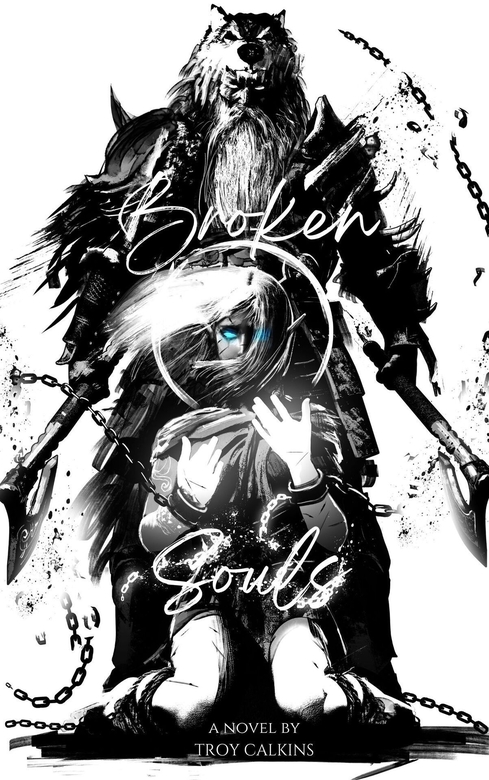
Crafting a spectacular new fantasy world with an unforgiving edge and two unforgettable heroes, Broken Souls by Troy Calkins is a sprawling, Viking-inspired epic.
Lura is an unassuming young woman trying to survive in a hard world, one where the unlicensed use of magic is prohibited, so she must keep her skills hidden – or at least muffled. Avenging those she loves will require all the craftiness and tenacity she can muster, but she has heart in spades. Bothvar meanwhile comes from a proud lineage of warriors, but is forced into the painful soul-searching and isolation that comes with separation from your people.
The alternating chapter format allows for the slow intermingling of these plotlines, capturing readers’ attention with two starkly different storytelling styles, where the characters’ parallel journeys to redefine honor and reclaim justice is an inspiring throughline in the story. Bothvar has a declarative and transparent way of sharing his side of the tale – stern and stubborn – while Lura’s chapters are imbued with uncertainty and excited energy, despite the heavy weight of her chosen responsibilities, offering compelling contrasts in this meticulously built world.
Though this is obviously a fantasy setting, the issues plaguing these characters and their respective societies are quite recognizable. Without enough food, money, or work, the poor classes are suffering, while the nobles live on their backs in decadence and comfort. The oppression of magical use, divided as it is by wealth and class, feels reflective of wealth disparity in our age of tech billionaires.
While the narrative voices are distinct and consistent, both occasionally suffer from idiomatic bits of language, or phrasing that doesn’t feel fully aligned with the setting or the given character’s personality. A line such as “Does a bear sh*t in the woods?” may pull some readers out of the literary trance that great fantasy writing achieves. Some of these anachronistic instances may be due to the clever blending of source material and cultural mythology behind this fantasy realm, as the history of this particular world is peppered with allusions or parallels to other legends and lore – religious, mythological, cultural, social, and magical – but other moments seem like oversights. Common descriptions and metaphors pop up from time to time, taking away from the illusion of fantasy.
Mostly, however, pulling from these varied wells makes this saga feel compellingly familiar – from Mjolnir and the Valkyries to revered saviors who give up everything for the freedom of all. The point of the dual-perspective epic is to be fully immersed in each character’s mind and experience, so when this illusion flickers, even for a moment, it is hard not to notice, but overall each character’s voice, and the intensive, multilayered world-building make the novel a riveting work of original mythmaking.
Despite some shortcomings in execution, this is an undeniably solid foundation for the Seasons of the Cycle series, which will appeal to readers from a range of genres. The ambitious scope of the plot, and the masterful draftsmanship required to bring these disparate characters together, is an impressive achievement.
Book Links
STAR RATING
Design
Content
Editing
Get an Editorial Review | Get Amazon Sales & Reviews | Get Edited | Get Beta Readers | Enter the SPR Book Awards | Other Marketing Services























Leave A Comment